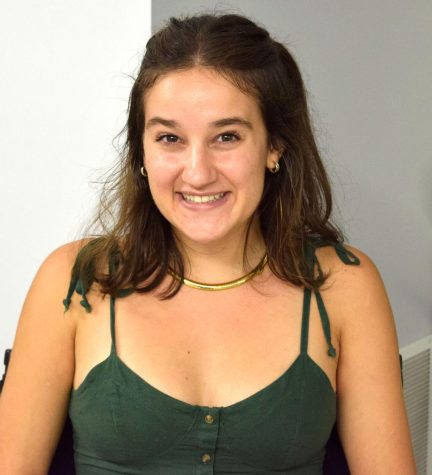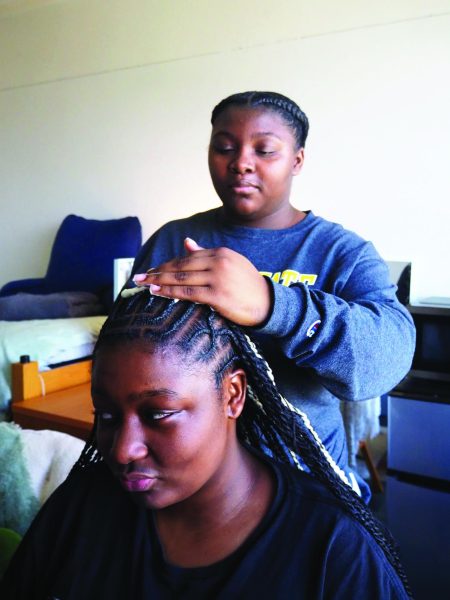Student Senate discuss an increase of student activity fee
October 7, 2021
Student Senate is currently discussing a proposal to raise the cap on the Student Activity Fee from 12 credit hours to 15 and will host a forum for students to express their opinions about the motion.
The current fee, set at $6.25 per credit hour, has a cap set at 12 hours. WSC requires students to take at least 12 credit hours to be considered a full-time student. According to Student Senate President, Blake Aspen, the proposal would move this cap to 15 credit hours.
The cap means that the fee stops at 12 credit hours. At this level, students pay $75 in total for 12 credit hours. Any student taking more credit hours, such as 15 or 18, pay the same amount, $75, because the cap stops at 12. If passed, the fee would stop at 15 credit hours, which raises the total $18.75 if students take that many credits.
Aspen explained that the amount allocated for clubs last year came out to $462,000.
“If you have 3,800 students, per semester they’re paying $75 if they’re taking 12 credit hours,” Aspen said. “That would equal about $285,000 per semester. So, our proposal is to increase that to 15 credit hours- the cap, not the fee. That would approximately equal out to $356,000 per semester, which is significantly higher than [before.]” Aspen said.
Allocations Vice President ,Jaycee Hammer explained, act as the large sum of money that the senate distributes between clubs.
The Student Senate has not officially proposed this motion, but it sits in the midst of discussions presently.
“Yesterday, I had a meeting with President Rames, and she sort of expressed some shock that we even have a cap at all because students who are taking 18 credit hours a semester are really getting a good deal,” Aspen said. “They use the parking lots more, they use the facilities more on campus, so you know that’s kind of surprising.”
According to the WSC website, the number of students on campus has grown 25% in the time between 2011-2021. President Rames displayed a census that projects Wayne to be at about 4,200 students by the end of the month, according to Aspen.
In the past, Wayne has closely compared to Chadron and Peru in size, but WSC is quickly approaching the University of Nebraska at Kearney in terms of population. According to UNK’s website, the college has 5,274 undergraduate students and 1,628 graduate students.
“Out of all of the state college systems, we have the largest student attendance, [but] our cap is the lowest. I just think that our activities and numbers are growing so I think that it would be good to have more funding for the clubs,” Hammer said.
Hammer disclosed that during Allocations Day this year, Senate had to cut funding for a few clubs.
Last year, the Student Senate added 10 new clubs to its roster, and at the next meeting, they will deliberate the induction of this year’s seventh new club. The Aristocats Dance Team has also recently moved to a club sport, which will then need to be funded by the Senate. With the increase of students, vehicles, clubs and more around campus, Hammer and Aspen see this proposal as a necessary action.
“You’re still getting a pretty good deal. Most campuses don’t have the credit hour cap, so we would still have the lowest fees in Nebraska per credit hour at $6.25. I think Lincoln’s paying $12 or something crazy,” Aspen said.
According to their websites, Chadron and Peru’s Student Activity Fees come to $7 per credit hour.
Student Senate’s budget includes clubs, intramurals, Wildcat Wheels, SkillsUSA, Student Activities Board and more. Recently, they partially paid for the nature trail and tennis court renovations.
Soon, Aspen hopes to use a part of this budget to address the concerns of students on campus and stick to the promises he made while campaigning for his position.
“So, these are the ways that the students are going to directly see the benefits,” Aspen said. “The parking lots have sort of been left to their own devices for a while, so when Jaycee and I were running, we were like ‘OK, we’ve got to like do something about this’ because it’s an obvious problem on campus.”
He recommended the addition of cameras in all parking lots, explaining that the task should no longer seem impossible.
If this proposal passes, the Senate hopes for it to start next year. It will need to first move through Senate, then the student body discussion forum and be debated by the Board of Trustees, before coming into effect.
Student Senate, after advancing the motion through its own ranks, hopes to host a forum to hear the opinions of students.
Taylor Ference, Chair of Campus PR and Technology for Senate, anticipates the discussion to take place shortly after midterm break.
During the forum, the Student Senate would present a comprehensive view of their proposal before opening the floor to the student body. Ference expressed that all students who have an opinion or interest in where their money goes should attend the meeting whether they support the proposal or not.
“As a Student Senate, we want to do what is right for all of our constituents,” Ference said. “So, if students who are against it show up, but those are the only people that show up, we’re going to vote against it. Basically, we’ll go with the consensus of the hearing, and if the majority doesn’t show up that want it, then we’ll go with that, but that could not be the actual [wishes of the student body.]”
Ference will post any material regarding a forum on Student Senate’s social media accounts, on informational flyers around campus, as well as a campus-wide email to involve as many students as possible.
Students who have opinions or suggestions about Senate legislation should not only attend forums, they should also run for positions, Aspen said.
“So, while we understand why there’s skepticism, and maybe even a lack of trust, it’s going to be used right. If students don’t like how this money is being spent, run. Run for Student Senate,” Aspen said.









